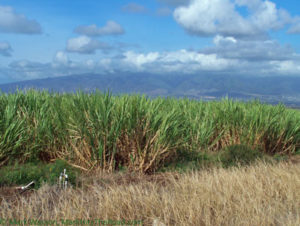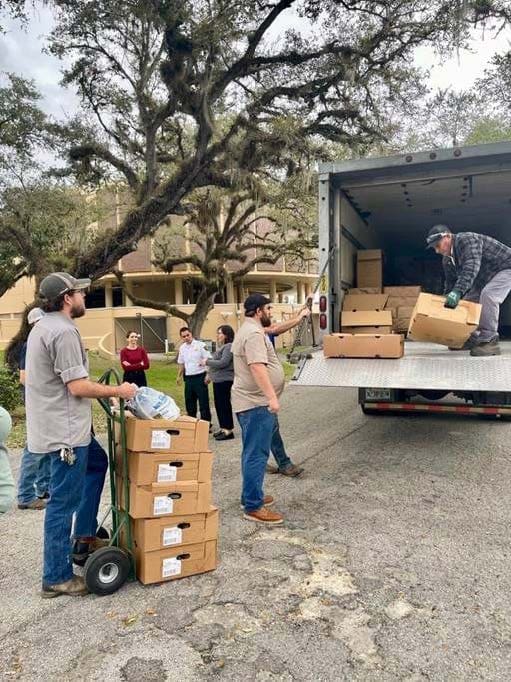 On behalf of everyone at U.S. Sugar, we would like to take a moment to reflect on the loss of sugarcane farming in Hawaii and its unfortunate impact on the employees and their families. Below is a New York Times article outlining the loss of this once strong economic engine in our nation’s 50th state.
On behalf of everyone at U.S. Sugar, we would like to take a moment to reflect on the loss of sugarcane farming in Hawaii and its unfortunate impact on the employees and their families. Below is a New York Times article outlining the loss of this once strong economic engine in our nation’s 50th state.
By LAWRENCE DOWNES
New York Times
1/16/17
Hawaii’s last working sugar mill, in Puunene, Maui, produced its last harvest last month. The last truck, piled high with newly cut cane stalks, blew its horn as it circled the mill yard. People cheered and held high their phones; a priest led a prayer. The cane was later put on a ship for processing in California, and 375 employees of the Hawaiian Commercial & Sugar Company became the last of the last to be laid off.
And that was it — as 2016 ended, so did an industry that has shaped Hawaii for almost 200 years. So much of the islands’ modern history and character, in all its color and complexity, can be traced to one export crop.
Mark Twain, visiting as a newspaper reporter in 1866, marveled at Hawaii’s sugar trade. “This country is the king of the sugar world,” he wrote, suggesting America should grab a piece of the action. It did. A treaty in 1875 gave Hawaiian sugar duty-free access to the United States; in return the United States took Pearl Harbor. Soon enough it took the rest: American planters engineered the overthrew of the monarchy in 1893. American annexation followed in 1898 and statehood in 1959.
The cane fields needed workers. Native Hawaiians, then a dying people, were too few. In their book “The Hawaiians,” Gavan Daws and Ed Sheehan explained the great labor migration of the mid-19th to mid-20th century:
“It was understood that the Anglo-Saxon would never perspire for plantation wages, bent over in the hot sun with hoe or cane knife. If you wanted Europeans, they would have to be … ‘just low enough to make them contented with the lot of an isolated settler and its attendant privations.’
“In practice this meant Portuguese, mostly from Madeira and the Azores. Otherwise it meant Orientals, peasants: two kinds of Chinese, the Punti and the Hakka; Japanese from Yamaguchi, Fukuoka, Kumamoto, and Hiroshima prefectures; some Okinawans from the Ryukyus; a handful of Koreans; and four kinds of Filipinos – Tagalog, Ilocano, Visayan, Panganisan.”
About 300,000 recruits never went home. They joined the native Hawaiians and Caucasian descendants of missionaries and merchants to form the core of modern Hawaii, the source of its wondrous social polyphony.
A pidgin English born in plantation camps became Hawaii’s own creole. Racial intermarriage was unremarkable there, decades before Loving v. Virginia. Ethnic humor flourished without apology or embarrassment. A comedian telling jokes about portagees, pakes and buddhaheads could leave an audience convulsed without rancor, since none of his targets had ever oppressed any of the others, every family had roots in immigrant labor, and they were all related anyway.
Those who remember the plantations’ heyday are in their 80s and 90s now. Their deaths show up in The Honolulu Star-Advertiser every day: Theogenes (Porky) Magalso Behic, retired diesel mechanic, Ewa Plantation. Nobuko Urata Hashimura, payroll clerk, McBryde Plantation. Pedro Bonilla Resurreccion, Waialua Plantation. The obituary in August for Dorothy Leilani Ellis Zeffiro, Miss Hawaii 1953, noted that she was of Hawaiian, Chinese, Japanese, English, Irish, Scottish and German descent, and that her late husband, Frank, had been a purchasing agent for Lihue Plantation.
Sugarcane still sways in fallow fields around the state. But the mills are hulks. Agrochemical companies are growing genetically modified seeds, and there are more papayas, macadamia nuts, orchids and anthuriums. My mother’s parents, from Okinawa, lived in Pepeekeo, on the Big Island, at the Mauka Loa plantation camp. Nothing is left of it but a towering Norfolk pine on the mountainside, near where horse stables once stood. Worker housing has gone to grass and red dirt.
But the blue Pacific is the same, the low clouds, the moist breeze. Beyond lie Hilo and a graveyard. When my mother and aunts and I visit Grandma and Grandpa, Kana and Kiyuei Higa, we take red anthuriums from the farmers market. To see the names all around, mostly Japanese and Okinawan, is to be struck anew at the strangeness of it, the transplantation of so many from so far away, to an outpost of diversity and harmony: a world built on sugar.




